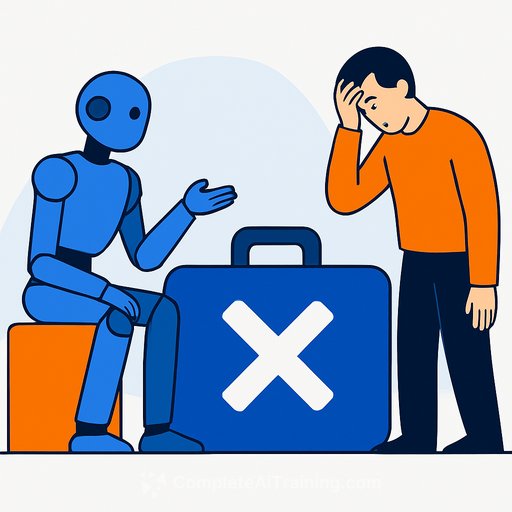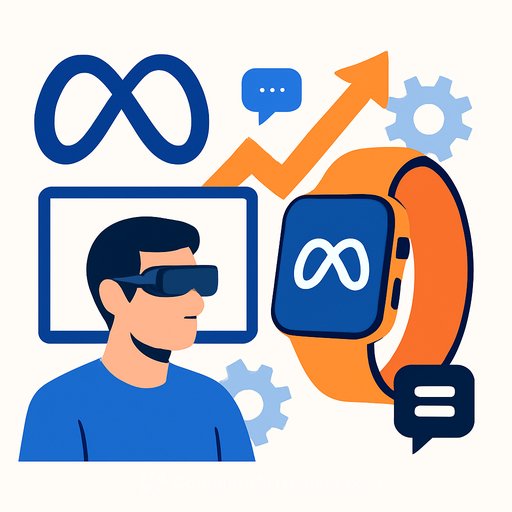Meta trims 600 AI roles as Superintelligence Labs reshapes how work gets done
Meta Platforms Inc. (NASDAQ: META) is cutting roughly 600 roles in its AI division as it consolidates research, product, and infrastructure teams under the new Superintelligence Labs unit. The shift is aimed at faster decisions, fewer handoffs, and clearer ownership.
The company says this is a strategic realignment, not a broad reduction of AI talent. Impacted employees are being encouraged to transition into other internal roles.
Scope of changes
- Teams affected: FAIR, product-facing AI groups, and AI infrastructure.
- Not affected: TBD Lab - the smaller team working on next-gen foundation models and a hub for high-profile AI hires.
- Redeployment: Many impacted employees will have paths to internal moves, according to an internal memo.
Alexandr Wang, Meta's Chief AI Officer, told staff the smaller footprint is meant to streamline decisions and raise the bar for individual ownership and impact.
Why this matters for product development
This is an org design move as much as it is a cost move. Meta is pushing toward leaner teams, tighter charters, and faster iteration cycles across research-to-product handoffs.
- Fewer layers: Smaller teams reduce latency between research, infra, and shipping teams.
- Clearer mandates: Product groups will be expected to run with more autonomy and accountability.
- R&D selectivity: Following lukewarm reception for Llama 4, expect a sharper filter on what gets model investment vs. productization time.
Context: Superintelligence Labs and AI ambitions
Meta began this restructuring in June 2025 after leadership departures and mixed feedback on its open-source Llama 4 model. Superintelligence Labs unifies FAIR, product-focused AI teams, and the TBD Lab under one umbrella for longer-term research, infrastructure, and product velocity.
FAIR has been Meta's research backbone since 2013 under Chief AI Scientist Yann LeCun. You can explore FAIR's research areas here: Meta AI Research (FAIR).
The infrastructure bet
Meta's AI push is heavily backed by compute and data center spend. In October 2025, Meta and Blue Owl Capital arranged a $27 billion financing deal tied to the Hyperion data center in Louisiana. Meta received a one-time $3 billion payout, with Blue Owl contributing about $7 billion in cash.
The site is projected to need up to five gigawatts of electrical capacity over time, targeting an initial two gigawatts by 2030. Translation for product teams: capacity planning and model cost curves will remain front-and-center in roadmap decisions.
Hiring stance: smaller teams, sharper talent density
Even as Meta reduces headcount in certain areas, the company says it will keep hiring "AI-native" talent. This mirrors a broader industry pattern: fewer seats, higher standards, and wider scope per seat.
For product leaders, expect stronger overlap between research, platform, and product responsibilities. Roles will skew toward builders who can move from concept to shipped feature without heavy scaffolding.
What product leaders can do now
- Re-cut team charters: Define ownership by user outcome and model boundary (what's in-house vs. external APIs).
- Tighten decision loops: Weekly model evals, latency/quality benchmarks, and prompt/playbook repos that ship, not just demo.
- Dual-track planning: Run research tracks (bets) alongside product tracks (deliverables) with explicit kill criteria.
- Internal mobility: Keep a bench of roles for AI engineers and researchers to rotate into high-need pods within 30 days.
- Cost discipline: Track unit economics per feature (inference cost per active, gross margin impact, GPU-hour budgets).
- Vendor/infra strategy: Treat data center and model access as product constraints; build fallbacks to avoid single-point risk.
30-day playbook
- Audit active AI features: quality, latency, retention impact, and unit cost. Cut low-signal experiments.
- Set a model strategy: open-source vs. proprietary, by use case. Document swap criteria and migration paths.
- Strengthen evaluation: automate red-teaming, bias checks, and failure mode alerts tied to release gates.
- Upskill your PM/Eng leads: align on prompting, evals, and LLM product patterns. Curated options by role: AI courses by job.
Signals to watch
- Hiring patterns at TBD Lab and FAIR: focus areas hint at the next model and infra bets.
- Compute disclosures and partner deals: capacity equals feature velocity; follow the money.
- Open-source posture after Llama 4 feedback: whether Meta doubles down or narrows releases.
Meta framed the layoffs as a small slice of its total AI headcount and encouraged internal applications. The stock traded down 0.58% at $729 on Wednesday.
Bottom line for product teams: plan for leaner teams, tighter loops, and relentless cost/quality tracking. The org model is shifting to fewer handoffs and more ownership. Set up your systems to match.
Your membership also unlocks:






